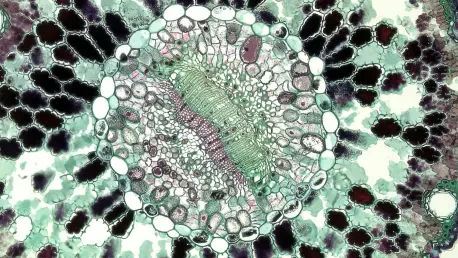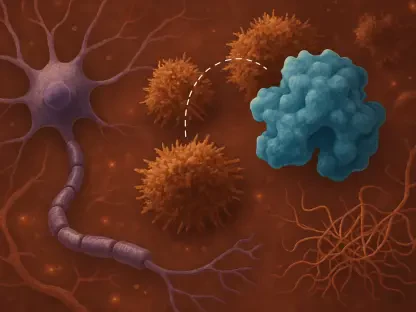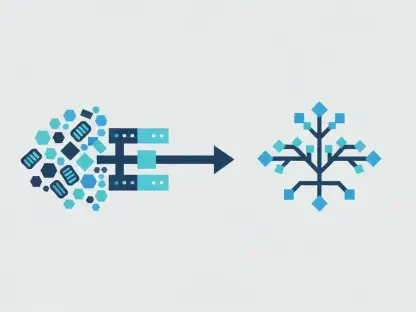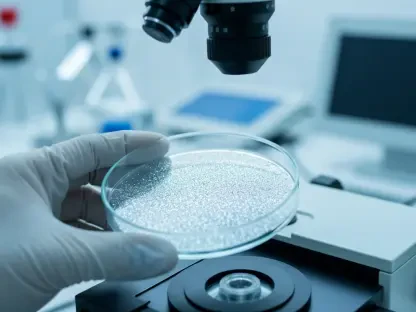In a groundbreaking advancement in cellular biology, scientists at the University of Virginia School of Medicine and the NIH have uncovered a previously unknown organelle, named the hemifusome. This advancement promises profound impacts on understanding and potentially treating complex genetic disorders. By functioning as the cell’s recycling center, the hemifusome plays a crucial role in the sorting, recycling, and disposal of cellular materials. Its linkage with rare genetic conditions like Hermansky-Pudlak syndrome, which involves symptoms such as albinism, lung complications, and blood clotting issues, could unlock novel therapeutic pathways. Researchers are now poised to explore these possibilities further, placing the hemifusome at the center of new investigative and therapeutic efforts.
The Role of the Hemifusome
Unveiling a Cell’s Recycling Center
The hemifusome’s critical functions within the cell are likened to those of a recycling center, specifically tasked with sorting, recycling, and disposing of cellular waste materials. This discovery spotlights the hemifusome’s vital participation in maintaining cellular balance and health. In a healthy cell, organelles efficiently handle waste, delivering necessary elements to sustain cellular function. However, the malfunctioning of such processes can lead to a cascade of cellular failures, potentially contributing to disease development. Captured via cryo-electron tomography, the behavior of the hemifusome during the formation of vesicles and larger multi-vesicle organelles reveals its dynamic intensity. These findings significantly advance our understanding of cellular housekeeping, showcasing how pivotal roles within the cell can go unrecognized until technology uncovers them.
Hemifusome’s Implication in Genetic Disorders
Rare genetic conditions have long posed severe challenges for medical research, and understanding the hemifusome’s malfunction in instances such as Hermansky-Pudlak syndrome opens a new dimension for investigation. Scientists now speculate that many previously inexplicable cellular dysfunctions might be traced back to this newly discovered organelle. The hemifusome potentially connects various genetic disorders, making it an exciting target for therapeutic investigation. Its involvement in the health and disease of cellular processes is considered a critical factor in both normal and pathological conditions. The potential regulation and correction of hemifusome function could lead to breakthroughs in therapies, offering new hope for conditions that have so far eluded effective treatment strategies.
Investigating New Avenues for Treatment
Exploring Therapeutic Potential
The revelation of the hemifusome sets the stage for a fresh wave of research focused on innovative therapeutic strategies for genetic diseases. Understanding how this organelle functions under normal and diseased conditions is crucial for developing interventions that can restore cellular health. Researchers are particularly eager to explore how manipulating hemifusome activity could rectify or prevent the defects inherent in genetic disorders. The role of the hemifusome as a regulatory body within the cell further underscores the need for continued exploration, promising novel insights into genetic correction and therapy.
Future Implications for Medical Research
A consensus is forming in the scientific community that hemifusomes could be more prevalent and essential in cellular function than previously imagined. This discovery illuminates previously obscure aspects of cellular biology, with potential implications for both treatment and diagnosis. As more is learned about the hemifusome’s role in cellular processes, biomedical research is poised to take substantial leaps forward, potentially changing the way genetic disorders are approached and managed. Continued research may reveal whether targeted therapies can effectively harness the hemifusome’s functions to combat genetic anomalies, paving the way for a future where complex genetic diseases are more treatable.
Bridging the Gap Between Discovery and Application
The discovery of the hemifusome opens up a new frontier for research targeting innovative therapeutic approaches to genetic diseases. Understanding the functionality of this organelle in both healthy and diseased states is essential for crafting treatments that can rejuvenate cellular well-being. Scientists are particularly keen on examining how controlling hemifusome activity might correct or possibly avert the defects that come with genetic disorders. Given the hemifusome’s influential role as a cellular regulatory element, there’s a heightened interest in ongoing studies that could yield groundbreaking insights into genetic repair and therapy. This knowledge could pave the way for pioneering methods in genetic correction, potentially altering the landscape of therapeutic strategies for genetic conditions. As more is learned about this organelle, it may lead to revolutionary approaches to traditional medicine, shifting how we view and treat genetic anomalies altogether, making a significant impact on medical science and patient care.









